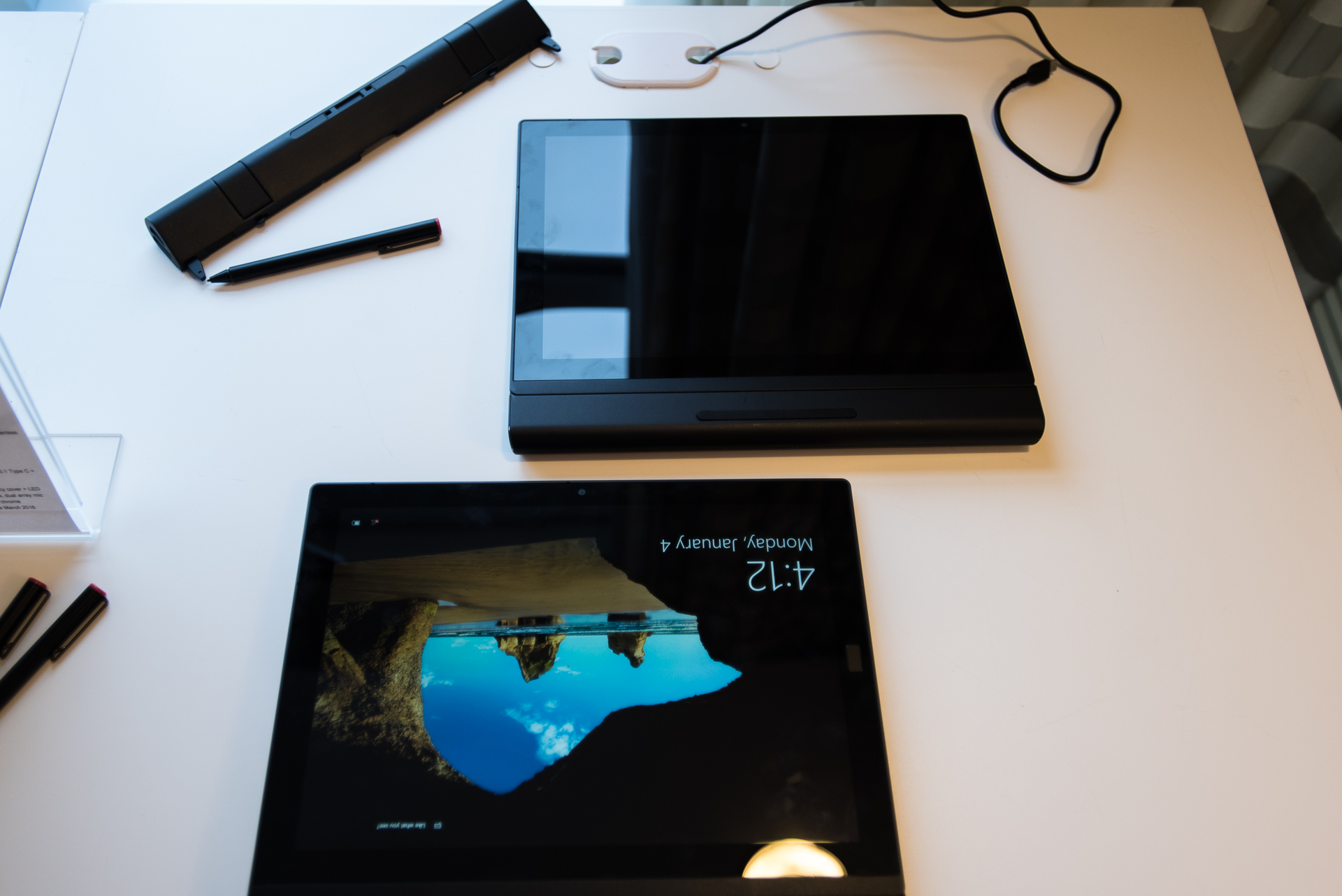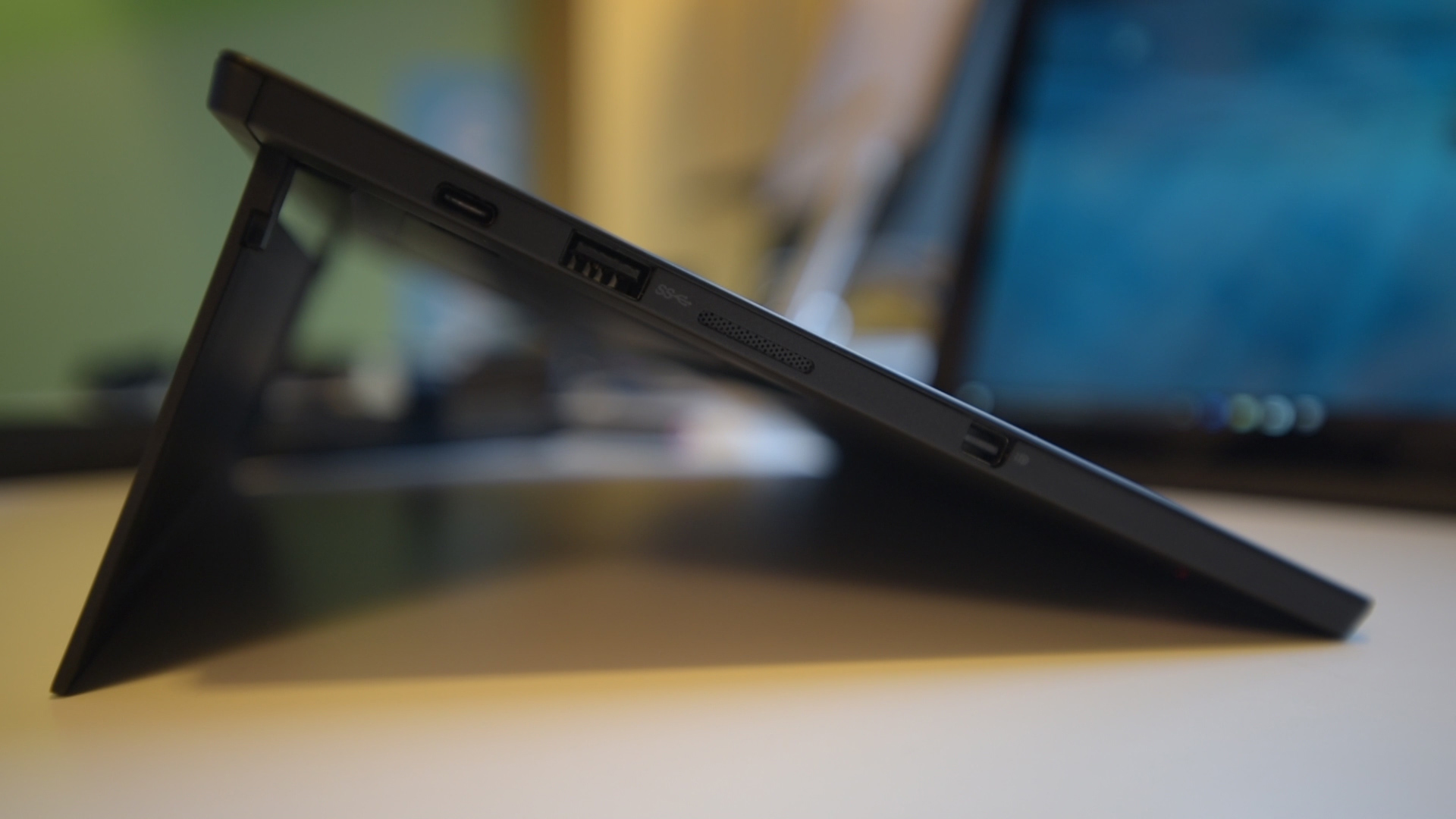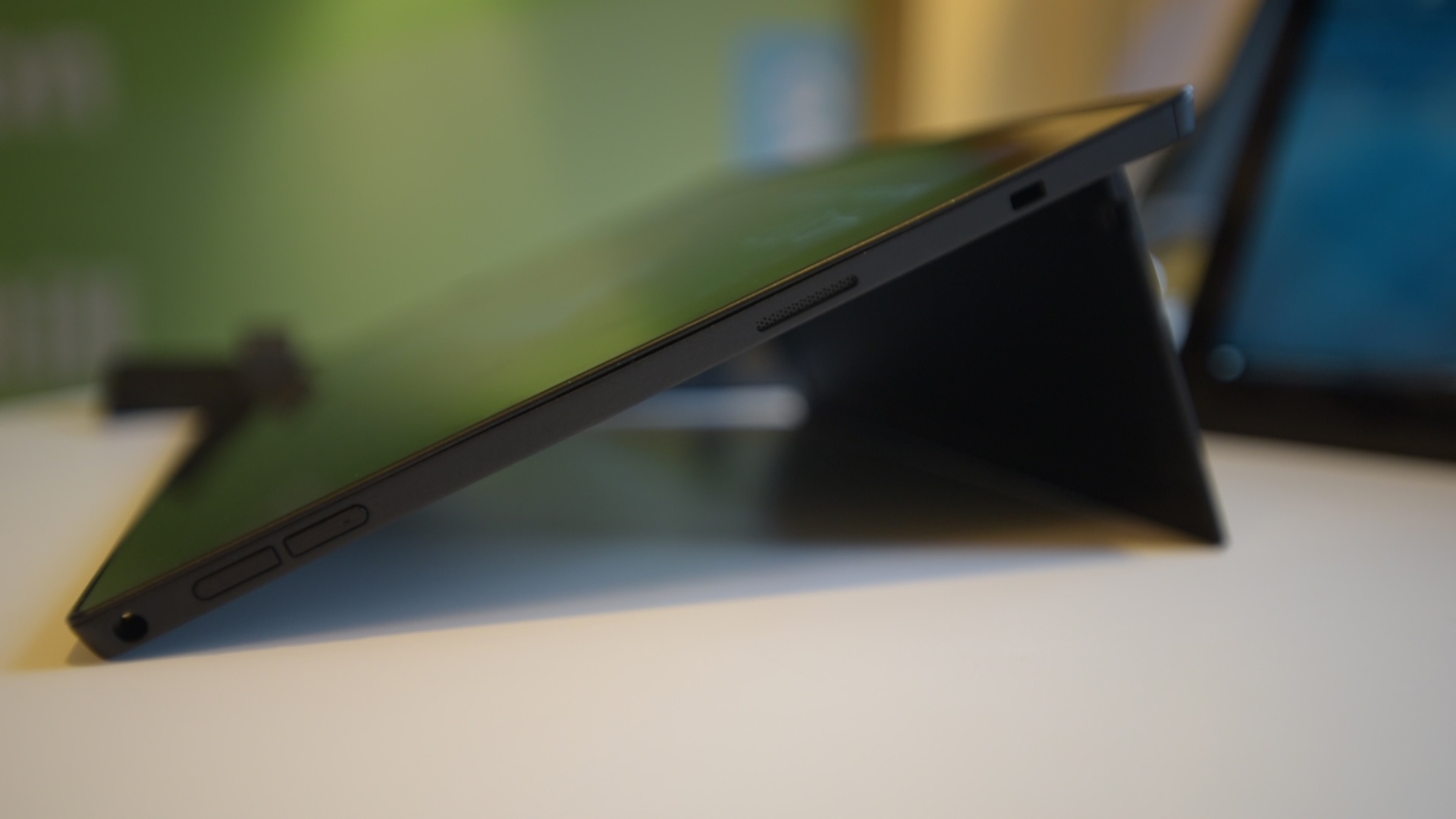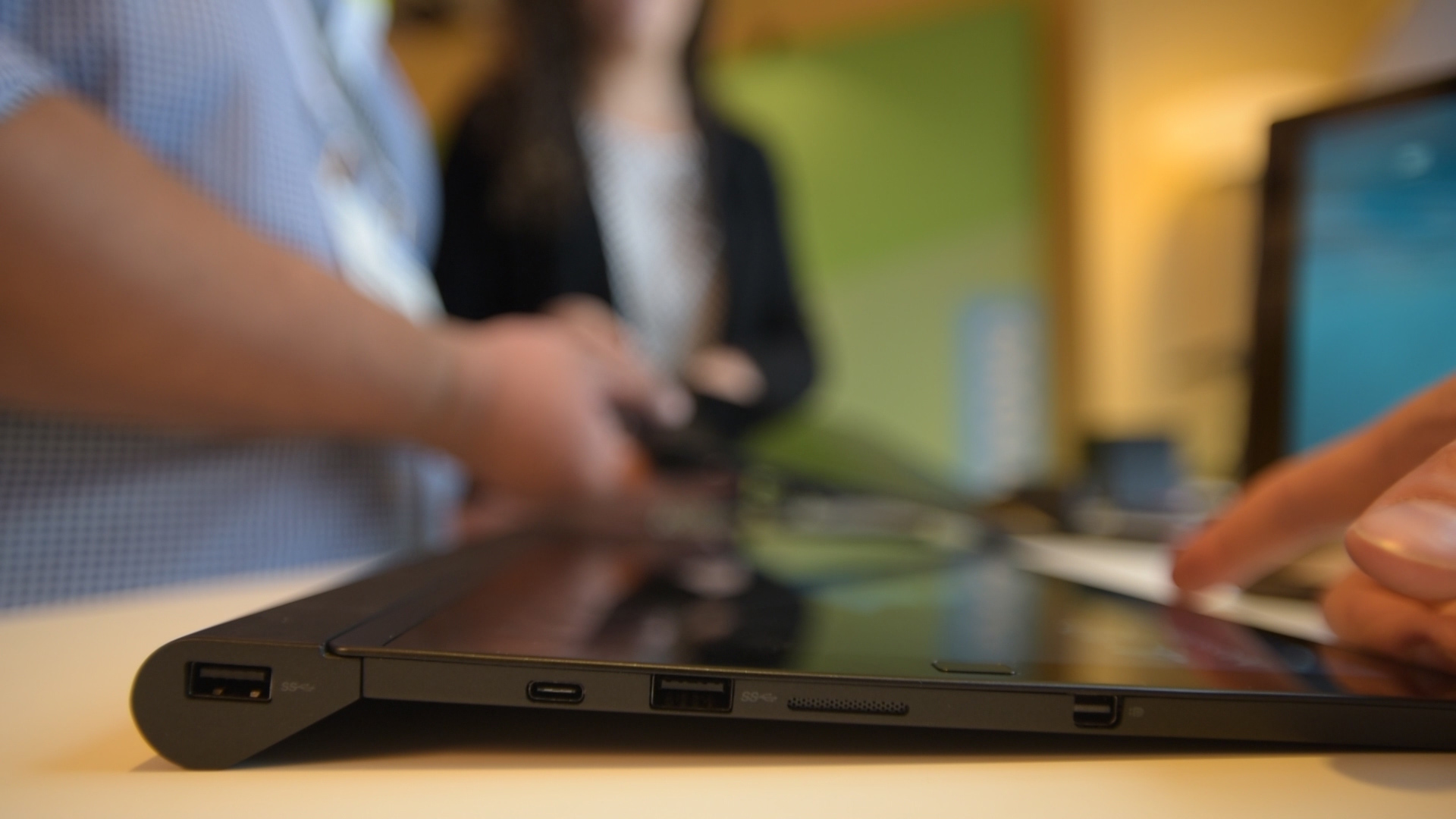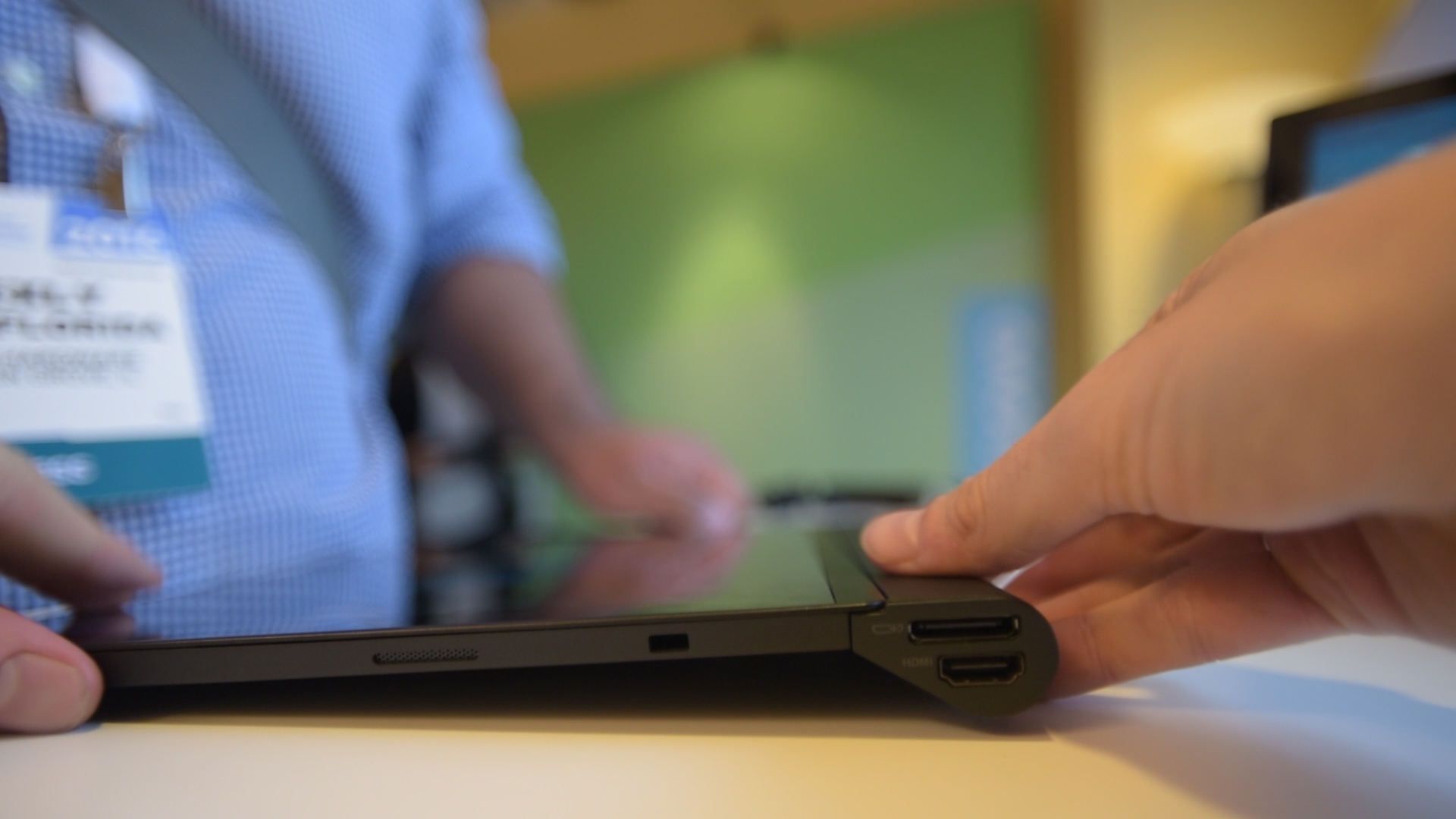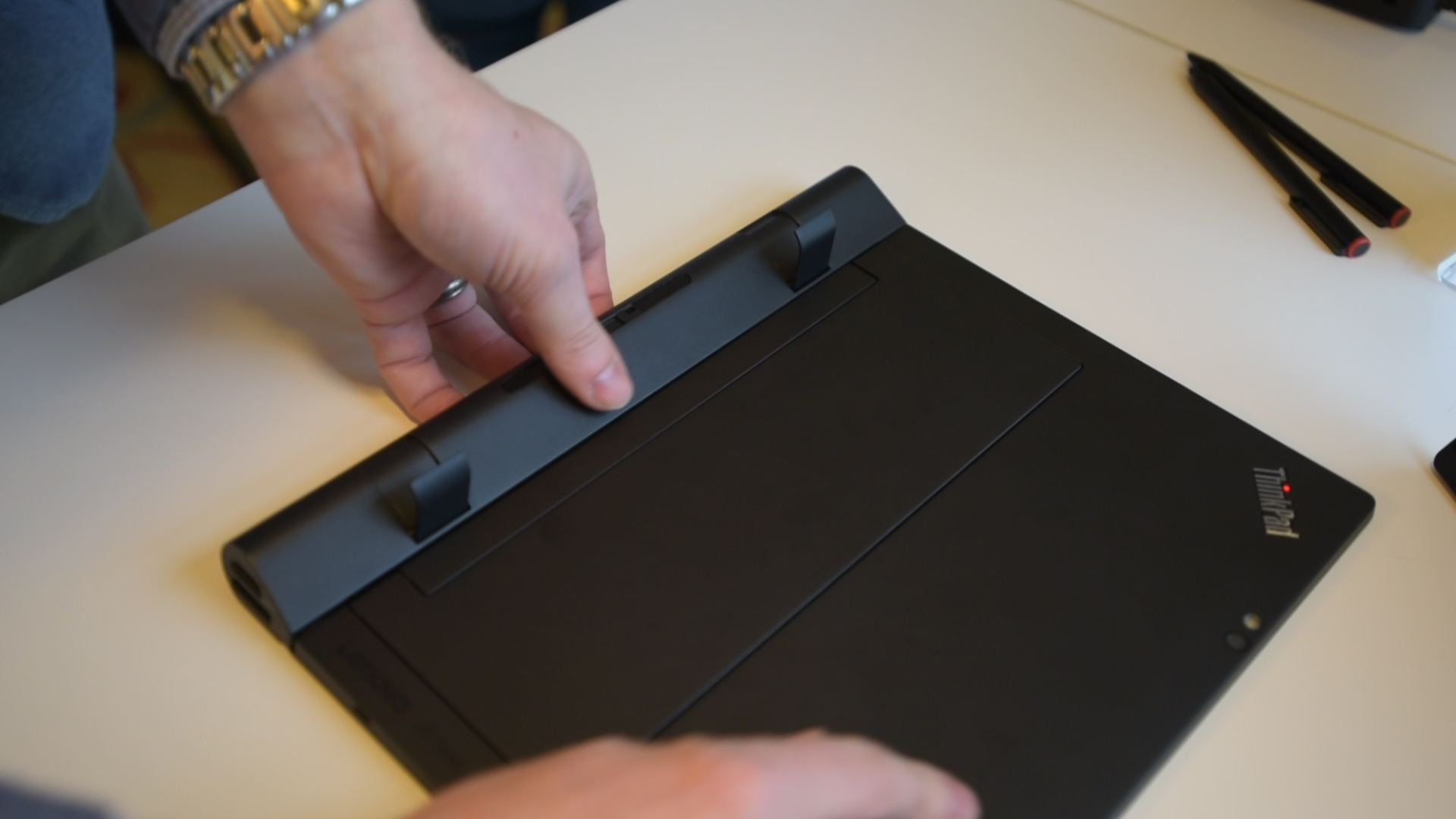Lenovo ThinkPad X1 Tablet: Premium Product And Commensurate Price (Hands On Video)
One of the more intriguing devices we saw at CES 2016 is Lenovo's ThinkPad X1 tablet, a 2-in-1 device spec'd to compete with the likes of Microsoft's Surface, aimed at business and professional users, and accompanied by extra modules to give you certain extra capabilities.
Design: All-Business Black
By itself, the X1 tablet has excellent specs. It also has a detachable keyboard (coming soon) that Lenovo boasted has the same mechanics as any ThinkPad keyboard you've used, as well as the TrackPoint, so the typing experience is ostensibly the same, but with a shallower travel.
When we saw it in person at CES, I have to admit that I felt the same way about it that I do about all of Lenovo's business-facing ThinkPad devices: It's not especially sexy, but I wanted to immediately sit down and get some work done with it. (Is that sad? I feel like that's sad.)
It has that same simple, black, down-to-business ThinkPad design, but in a slim (8.4 mm) form factor. There's a sturdy kickstand on the back that unlocks with a button, similar to how you activate the kickstand on the Lenovo Yoga Tab 3 Pro, but the X1 has a sort of A-frame design like the Surface. (This kickstand design also helps with positioning the projector module. More on that further down the page.)
The keyboard can sit in multiple positions relative to the tablet when it's attached, so you can adjust the typing angle to your preference.
Because it's a business-facing device, Lenovo designed it with a removable back cover, so IT can access its internals -- the access appears to be broad, and you can certainly get to the RAM, WWAN card, battery and SSD.
You can get an X1 tablet with or without a fingerprint sensor on the right-side bezel. On one side you'll find the headphone/mic jack, volume up/down buttons, OneLink+ port, and a speaker. The other has the mini DisplayPort, a USB A port and a USB-C port with Power Delivery. There's also microSIM and microSD slots. On the bottom you'll find Lenovo's special dock connector.
Get Tom's Hardware's best news and in-depth reviews, straight to your inbox.
More With Modularity
Speaking of that dock connector, it's a portal to a whole new world of possibilities for the X1 tablet, and it's what sets it apart from its competition. For now, there are three modules that you can buy along with the X1 tablet.
| Header Cell - Column 0 | Productivity Module | Presenter Module | 3D Imaging Module |
|---|---|---|---|
| Ports | - HDMI- USB 3.0- OneLink+ | - HDMI- Built-in projector | - HDMI- Intel RealSense camera |
| Misc. | Adds 5 hours battery life | 60-in projection from 2 meters | -- |
| Availability | Feb 16 | Feb 16 | May 16 |
| Price | $149 | $279 | $149 |
However, there's nothing to stop Lenovo from adding as many modules as it thinks the market demands. The company historically has done a great job of paying attention to user feedback, so if enough customers request something, Lenovo will likely build it.
With this modular design, that's a perfect scenario for Lenovo. It can simply iterate on the X1 tablet itself, refreshing the specs to whatever's hottest and freshest, and experiment prolifically with potential modules without any risk to the core product.
I found that swapping the modules in and out was slightly clunky. You have to unsnap a couple of latches to free whichever piece is attached to the bottom of the tablet. There's a small, thin placeholder piece that you have to remove to add a module, and my first thought when I took it off was that I would definitely immediately misplace it in the real world of an office. (It was also tricky to put it back on; you have to have it in the right orientation, which isn't immediately apparent.) Then, to secure the attached module, you snap the two latches back into place.
This isn't a huge deal, as you likely won't be swapping modules in and out all the time, but it's less elegant than the magnetic latching we're used to seeing with tablets and their keyboards.
A final note on the design: Lenovo's modules make use of the comfortable and secure-grip "barrel" design we've seen in its recent consumer tablets.
The Specs
Our first question about the ThinkPad X1 tablet was why Lenovo opted for a Core m chip as opposed to a Core i. Not surprisingly, a rep told us that the primary reason was that Core m allowed them to stick with a fanless design. He also said that the performance bump up to Core i was just around 10 percent, which they didn't feel was worth being stuck with a thicker tablet and a fan.
The display is terrific, and the RAM and storage options are superb. The USB-C port is ideal for connecting the tablet to a monitor to give you a one-cable charging and dual-monitor setup.
| Header Cell - Column 0 | Lenovo ThinkPad X1 Tablet |
|---|---|
| Display | - 12 inches- FHD+ 2K 2160x1440 (3:2) IPS |
| CPU | Up to Intel 6th Gen Core m7-6Y7 vPro (4M Cache, up to 3.10 GHz) |
| Graphics | Intel HD Graphics 515 |
| RAM | Up to 16 GB memory LPDDR3 |
| Storage | Up to 1 TB PCIe NVMe SSD |
| I/O | - IR Camera (optional)- WiGig- USB 3.0 (x1)- USB Type-C PD (x1) - mDP- micro SD- Audio jack- Nano Sim |
| Connectivity | - LTE-A (Qualcomm Snapdragon X7 LTE modem) |
| Battery | 10 hours |
| OS | Windows 10 Pro |
| Dimensions | - Tablet: 8.4mm (0.33”) / 795g (1.75lbs- With keyboard: 13mm (0.51”) / 1.1kg (2.4lbs) |
| Misc. | - Productivity module ($149)- Presenter module ($279)- 3D Imaging Module ($149, coming May 2016)- "Thinkpad classic" typing experience w/ TrackPoint- Stylus |
| Availability | Feb 2016 |
| Price | Starts at $899 |
The price tag is nothing to sneeze at. As we wrote in our previous coverage, the base configuration is already $899. We don't know what the minimum configuration will even be -- the above are maximum specs -- so assume some sort of premium above $899 for the fully-dressed tablet itself.
The keyboard will cost extra (though we don't know how much yet), and of course the modules so far range from $149 to $279.
In other words, you'll pay a premium, but you're getting a high-end, incredibly flexible business tool wrapped in a svelte tablet (well, 2-in-1) form factor.
Seth Colaner is the News Director for Tom's Hardware. Follow him on Twitter @SethColaner. Follow us on Facebook, Google+, RSS, Twitter and YouTube.
Seth Colaner previously served as News Director at Tom's Hardware. He covered technology news, focusing on keyboards, virtual reality, and wearables.
